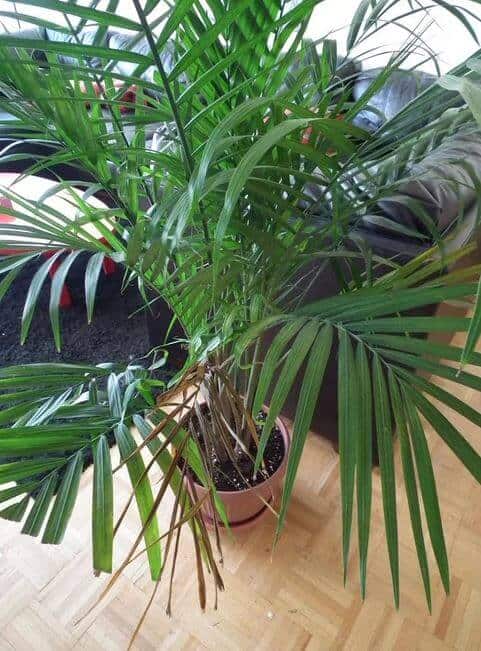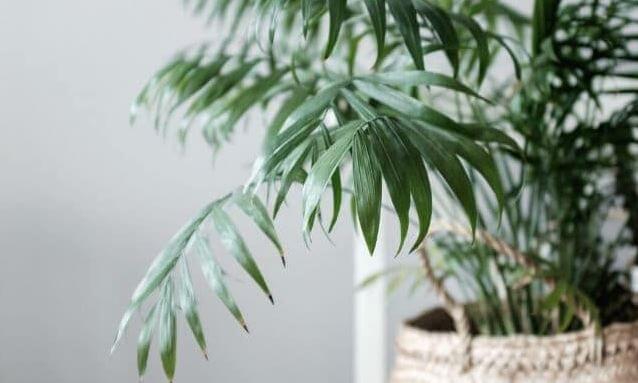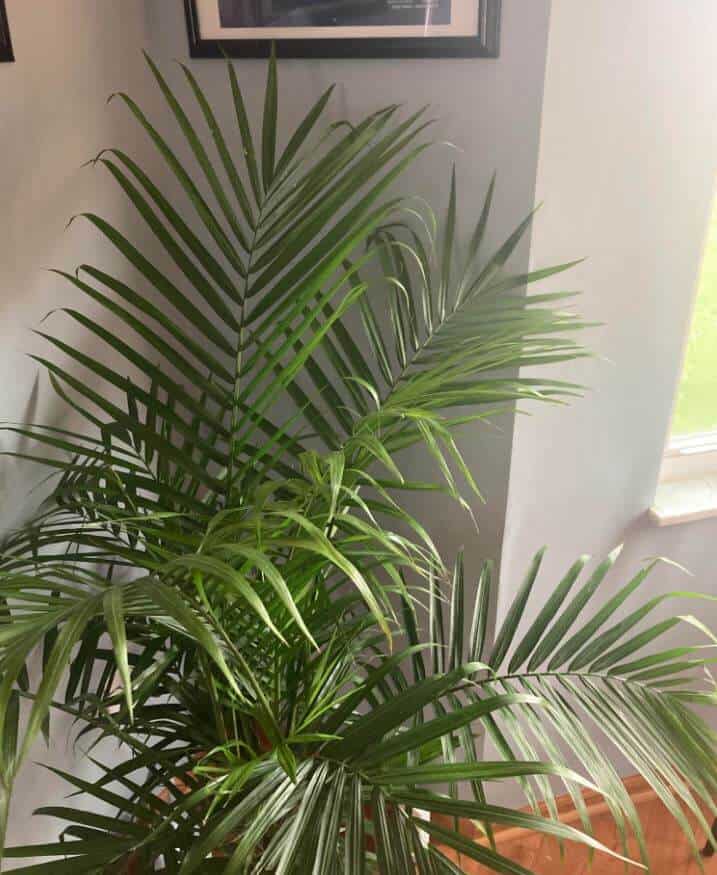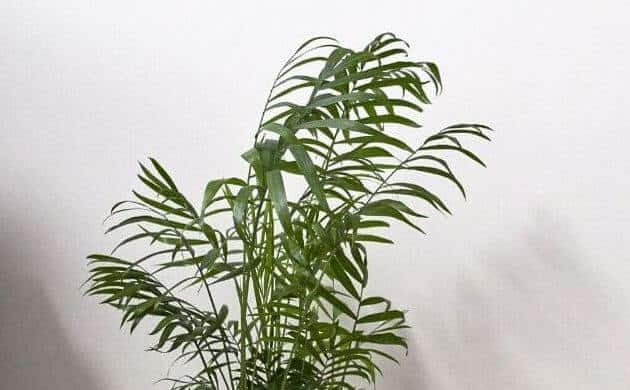Last Updated on February 6, 2023 by a Friendly Gardener
If you have a parlor palm, you may at some point witness your plant’s leaves curling. The beautiful Chaaedorea elegans is a delightful addition to your indoor garden with multiple leaflets that look like feathers. Your palm is communicating that it is stressed, so it’s important to identify the reason so you can intervene quickly.
Common reasons for curling parlor palm leaves include watering issues, insufficient humidity, nutrient deficiencies, or improper lighting. If you correctly identify the reason, your palm will be extending its fronds outward instead of curling up.
Watering Issues
Underwatering

A parlor palm will begin to curl its leaves if it doesn’t get enough water. It does this to prevent the loss of moisture. If your palm leaves are curling, consider underwatering first. If the soil bed is very dry, it’s time for a drink.
If underwatering is the cause begin by watering lightly every day for a week before resuming a regular watering schedule. Once your palm has revived, water when the top inch of the soil feels dry.
Overwatering
Overwatering leads to soggy soil especially if there is a drainage problem. Excess water can lead to root rot which can be fatal to palms.
If the soil is still damp, you should hold off watering. Should root rot set in you will need to remove compromised roots and replant your palm in fresh soil.
Water Quality
If your watering schedule doesn’t appear to be the problem, consider the quality of the water you are using. These palms often exhibit sensitivity to minerals contained in water as they can build up in the soil around the root system. Curling leaves and brown tips generally are an indication of this.
Water your parlor palm with distilled, filtered, or collected rainwater if municipal water is hard.
Insufficient Humidity

Parlor palms love humidity, but indoor humidity may be a bit low, especially if you use heating or air conditioning. Low humidity is one of the more common reasons for parlor palm leaves curling. Monitoring humidity can assist you in keeping moderate levels inside.
You can use a space humidifier or a pebble tray to increase indoor humidity. Regular misting of your palm will also help. Keep your plant away from drafty spots and heating or air conditioning units and vents.
Improper Light
Parlor palms are tropical plants found in jungles. They usually grow under a canopy of taller trees, so sunlight is dappled or filtered. These palms love a humid, warm environment with generous but indirect sunlight. Direct excessive sunlight exposure can cause a parlor palm’s leaves to curl. The palm will curl its leaves to reduce the number of leaves exposed.
Move your palm to a spot with bright, but indirect light. As it adjusts to proper light, leaves will begin to uncurl.
Nutritional Issues

A lack of nutrients can cause palm leaves to curl. Parlor palms need potassium, magnesium, manganese, iron, and sulfur to thrive. A lack of any of these elements can create problems for your plant and result in yellowing leaves and curling.
Other common nutrient deficiencies include:
- Phosphorous is indicated by blush-hued leaves and curling downward
- Potassium indicated by dark brown curling leaves
- Nitrogen is indicated by paling, soft leaves curling inward
To contrast nutrient deficiencies, use a fertilizer enriched with the missing nutrient.
If the soil bed is too acidic, soil pH can impede the absorption of these nutrients.
Use a pH tester to ascertain if the soil is too acidic. You can neutralize your palm’s soil bed by watering with water that has added bicarbonates and calcium. The pH should ideally measure from 6.0 to 6.5.
Overfertilizing
Another problem indirectly connected to plant nutrition is overfeeding. Exaggerated fertilization will cause a salt buildup in the soil bed that will inhibit the root system from absorbing water leading to dehydration which will contribute to leaves curling and dying.
Flush out your plant’s soil to remove excess salts or repot your plant in fresh soil.
Soil Quality

When cultivating a parlor palm in a container, potting soil should be chosen with care. Compacting soils like clay should be avoided because they retain too much water and may not provide adequate aeration.
Choose a loose, well-draining potting mix that is loamy and fertile.
Pest Infestations
Various houseplant pests can attack your palm causing the curling of leaves. Common pests to watch for include:
- Aphids
- Mealybugs
- Spider mites
- Thrips
- Whiteflies
These pests can be contrasted by treating your palm with insecticidal soap or a soapy dishwater solution. In the alternative, you can spray the palm with Neem oil which is not harmful to humans or pets.
Palm Curling Leaves

Majesty Palm leaves curling, and Areca palm leaves curling have reasons and solutions that are very similar to Parlor Palm leaves curling. The more common reasons include humidity that is either too high or too low, overwatering or underwatering, a lack of specific nutrients, exaggerated fertilization, too much or too little light, pest infestations, improper soil type, or improper water quality.
It’s crucial when cultivating palms indoors that you maintain a proper watering schedule. Palms need to avoid direct sunlight which can quickly cause dehydration leading to leaf curling as a defense mechanism to retain moisture. Drafts are likewise undesirable. Watch for evidence of pests and opt for collected rainwater or distilled water as opposed to municipal tap water with lots of minerals or chemicals.
Again, it is important to identify the cause of curling leaves to apply the correct remedy.
Cat Palm Leaves Curling
Cat palms, botanically known as Chamaedorea cataractarum, generally have one of two problems if leaves begin to curl. One cause is an infestation of thrips. These tiny insects feed on the palm’s cells causing the leaves to curl. To cure a thrips attack, prune all infected leaves. Spray your palm with a showerhead or garden hose every other day for a week. Thrips thrive in high nitrogen or dry environments. Use a low-nitrogen fertilizer and mist regularly.
The other cause is a deficiency of magnesium. Use a slow-release fertilizer containing the macronutrient.

